Image Credit: Steve Larson
Steve Larson, a builder and home energy rater in Florida, sent me an e-mail with his energy bills for February through July of 2012. When you subtract out the monthly service charges, he paid only $5.35 for electricity during those six months. That’s right — less than a dollar a month for electricty… and then $9.88 a month for the service charge.
“Saving energy has been my passion for a long time,” Larson wrote. Since he added the solar electric system to the house in 2008, producing it has become a passion, too.
Begin with energy efficiency
The basic idea of net zero energy is having enough onsite power production to offset the energy consumption in the building. I discussed the topic a bit in my article about Amy and Matt’s net-zero-energy home in North Carolina. Lloyd Alter of Treehugger described one way to get to net zero energy: “In Net Zero, you want to generate enough power on site to heat, cool and light your house; it could be a draughty barn, but if you put enough green gizmos on the roof to generate enough green energy to feed it, who cares?” Just a touch of sarcasm there, eh?
Larson chose the smarter path to net zero. He didn’t have onsite power production in the beginning, but he did start with a healthy dose of energy efficiency when he built the house in 1991-92. Here are some of the features that make it so efficient:
If you have a feel for those numbers, you can tell it’s a pretty good house. Without the photovoltaic modules, the HERS Index for this house is 65.
Remember: this house was built 20 years ago! A HERS Index of 65 means it’s 35% more efficient than the same home built to the 2004 International Energy Conservation Code (IECC), so it was 35% better than a code that came 15 years after the house was built!
Adding enough photovoltaics to get to net zero
In 2008, Larson added a 5-kilowatt (kW) photovoltaic (PV) system to the house. That didn’t take them all the way to net zero, though, because he also has a huge garage and air-conditioned shop. So he added a second 5-kW system in 2010, and that got them to where they are today, paying an electricity bill that’s just $9.88 per month in service charges, with rarely any charge for actual net electricity consumption.
In case you’re wondering, the first 5-kW PV system cost $40,000, and they got $23,000 in federal, state, and utility tax credits and rebates. About $20,000 of the incentives came from the state of Florida. The second 5-kW system cost only $28,000, a 30% drop in just two years. Their total cost after incentives came to $37,000, giving them a payback period of about 14 years.
The HERS Index of the home including the energy production from the solar modules is an impressive -14. A HERS Index of zero means that the home produces just as much energy as it uses, no more and no less. According to the HERS Index, their home exceeds the net zero energy threshold. “It has been a very comfortable home to live in for the last 20+ years, but the $9.88 electric bills have us in a very nice position. My wife is a very happy camper,” said Larson.
According to the electricity bills he sent me, Larson’s electricity usage is generally in the range of 500 to nearly 1,000 kilowatt-hours, mostly toward the lower end. Some months they produce more electricity than they use, as you see in the meter readings below, and other months they use more than they produce. The snippet below is from their May 2012 electricity bill, showing that they used 490 kWh that month while producing 965 kWh. They generally run a surplus, as you can see in the bottom number, which is the running total of their electricity production versus consumption.
Steve and his wife are helping to make Florida’s nickname — the Sunshine State — true in more ways than one. “We are pretty happy how far out in front of the running of the bulls we are,” Steve said. Of course, someone who’s been a HERS rater since 1994 is used to being out in front.
Allison Bailes of Decatur, Georgia, is a speaker, writer, energy consultant, RESNET-certified trainer, and the author of the Energy Vanguard Blog. You can follow him on Twitter at @EnergyVanguard.
Weekly Newsletter
Get building science and energy efficiency advice, plus special offers, in your inbox.

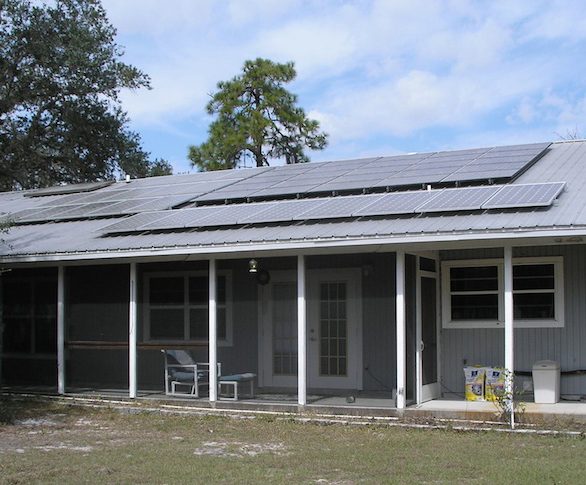




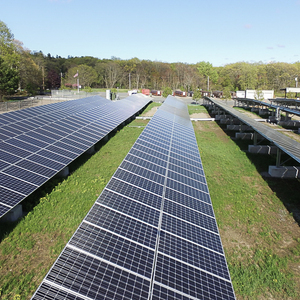
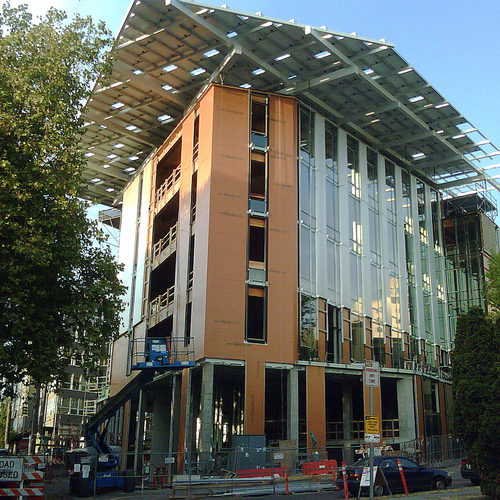
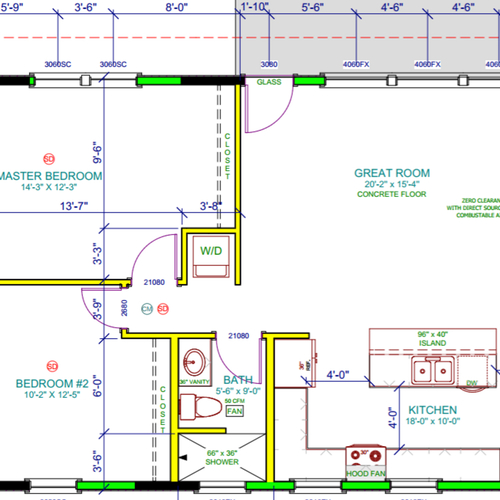
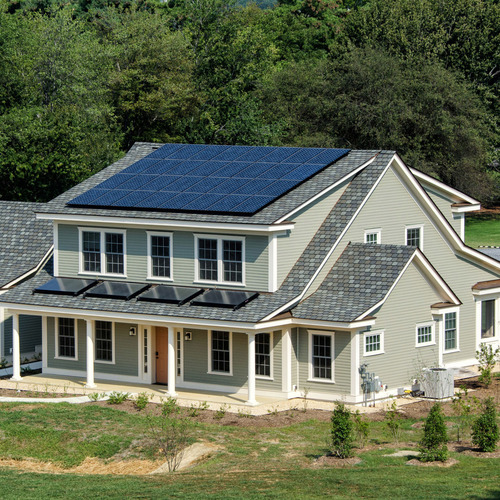






3 Comments
Do the math
"his house was built 20 years ago! A HERS Index of 65 means it's 35% more efficient than the same home built to the 2004 International Energy Conservation Code (IECC), so it was 35% better than a code that came 15 years after the house was built!"
Lessee, it's 2013 now, so 20 years ago it was 1993, and 15 years after 1993 comes ta 2008.
So by that reckonin' 2004 didn't come around until 2008 or something, right? Tbe IECC just called it 2004 to fool us. :-)
But wait a minute...
"He didn’t have onsite power production in the beginning, but he did start with a healthy dose of energy efficiency when he built the house in 1991-92."
So either we skipped a year, and that was built 21-22 years ago, not 20 years ago, so 2004 actually occurred in 2006 or 2007?
This is too confusing- we shouldn't let physicists do the easy math, unless their name is Tom Murphy!
http://physics.ucsd.edu/do-the-math/
Nice job on the house though- the comfort factor of a well though out lower-load/higher-R house in FL can't be underestimated either. Does it really need a 3-ton air conditioner though, at those R values, with shaded south windows and no west windows? Or was that the smallest high-efficiency cooling available at the time?
Brute Force Method
Deploying 10kW of PV to achieve net zero for a 2144 SF house in Florida on first blush sounds like favoring generation over conservation. Depending on shading, a 10 kW system should make 40 kWh / day, net of various component losses, way more than this house should need, though shop usage is an unknown.
2144 SF home at reasonable infiltration (3.4 ACH 50 ain't bad here, though the PH crowd would rise up upon their hind legs and wave their antennae furiously at the thought) and described modest glazing should come in at 2 tons, especially with tight ducts.
I assume (info not provided) ducts are outside conditioned envelope...arrayed throughout hot attic as is so typical in Florida.
Sprayfoam insulation, quality checked for leakage with fog or IR would simultaneously deal with attic ductwork in an unconditioned space and reduce infiltration, likely down to 2 ish ACH50, given the other details mentioned. Duct leakage from ducts in conditioned space is immaterial, within reason.
With that done, I'd be looking at a 2 ton 2 zone 2 stage heat pump with an eye toward bedrooms on one zone and public / daytime use rooms on the other zone. Done right, it would stay in low stage 95+% of the time. (~1.3 tons). Know that high SEER rated heat pumps attain rated / advertised SEER while in low stage, so conduct design accordingly.
Heat pump water heater is much more cost effective than solar thermal for households of 5 or fewer people.
SEER 16 two stage system would likely be more cost effective than SEER 18+, as long as the savings went toward other efficiency upgrades (lighting, laundry, refrigeration, to name three)
Netzero house
Curt, while the story doesn't say, the house probably had solar hotwater long ago, perhaps before heat pump hot water heaters were widely available. In Florida a good Solar H2O system should perform quite well and probably meet the demand better than a hotwater heat pump heater.
Are the air and duct leakage numbers current -- or back from when the house was built?
Log in or create an account to post a comment.
Sign up Log in